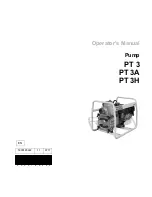
APPLICATIONS
WARNING
To reduce the risk of injury, do not
remove or attach accessory tips
until tool has cooled to room temperature.
Types of Nozzles
•
Hook Nozzle - Surrounding heat for thin pipe weld-
ing, soft soldering copper pipes, tube shaping and
shrinking of shrink tubes.
•
Air Reduction Nozzle - Intensified, spot directed heat
for corners, plexiglas bending and soldering.
•
Deflector Nozzle - Deflected heat protects glass
window panes when removing paint and putty.
•
Air Spreader Nozzle - Directs heat over large areas for
drying, removing paint, floor coverings, and vinyl tops.
Removing Paint
WARNING!
Read safety instructions for removing
paint before proceeding with paint removal.
1. Place nozzle approximately 1" away from work
surface.
2. Pass nozzle back and forth over a small area of
workpiece.
3. When paint starts to blister, then remove heat.
4. Remove paint using a sharp-edged putty knife.
Heat Shrinking
1. Attach an air reduction or hook nozzle to the heat
gun.
2. To heat shrink tubing, apply heat to the workpiece
using a side to side motion until tubing has shrunk.
Remove heat immediately.
MAINTENANCE
WARNING
To reduce the risk of injury, always
unplug the charger and remove the
battery pack from the charger or tool before
performing any maintenance. Never disassemble
the tool, battery pack or charger. Contact a
MILWAUKEE service facility for ALL repairs.
Maintaining Tool
Keep your tool, battery pack and charger in good
repair by adopting a regular maintenance program.
Inspect your tool for issues such as undue noise,
misalignment or binding of moving parts, breakage of
parts, or any other condition that may affect the tool
operation. Return the tool, battery pack, and charger
to a MILWAUKEE service facility for repair. After six
months to one year, depending on use, return the
tool, battery pack and charger to a MILWAUKEE
service facility for inspection.
If the tool does not start or operate at full power with
a fully charged battery pack, clean the contacts on
the battery pack. If the tool still does not work prop
-
erly, return the tool, charger and battery pack, to a
MILWAUKEE service facility for repairs.
WARNING
To reduce the risk of personal in-
jury and damage, never immerse
your tool, battery pack or charger in liquid or
allow a liquid to flow inside them.
Cleaning
Clean dust and debris from vents. Keep handles
clean, dry and free of oil or grease. Use only mild
soap and a damp cloth to clean, since certain clean-
ing agents and solvents are harmful to plastics and
other insulated parts. Some of these include gasoline,
turpentine, lacquer thinner, paint thinner, chlorinated
cleaning solvents, ammonia and household deter-
gents containing ammonia. Never use flammable or
combustible solvents around tools.
Rely only on high-grade power tools on our virtual shelves.























